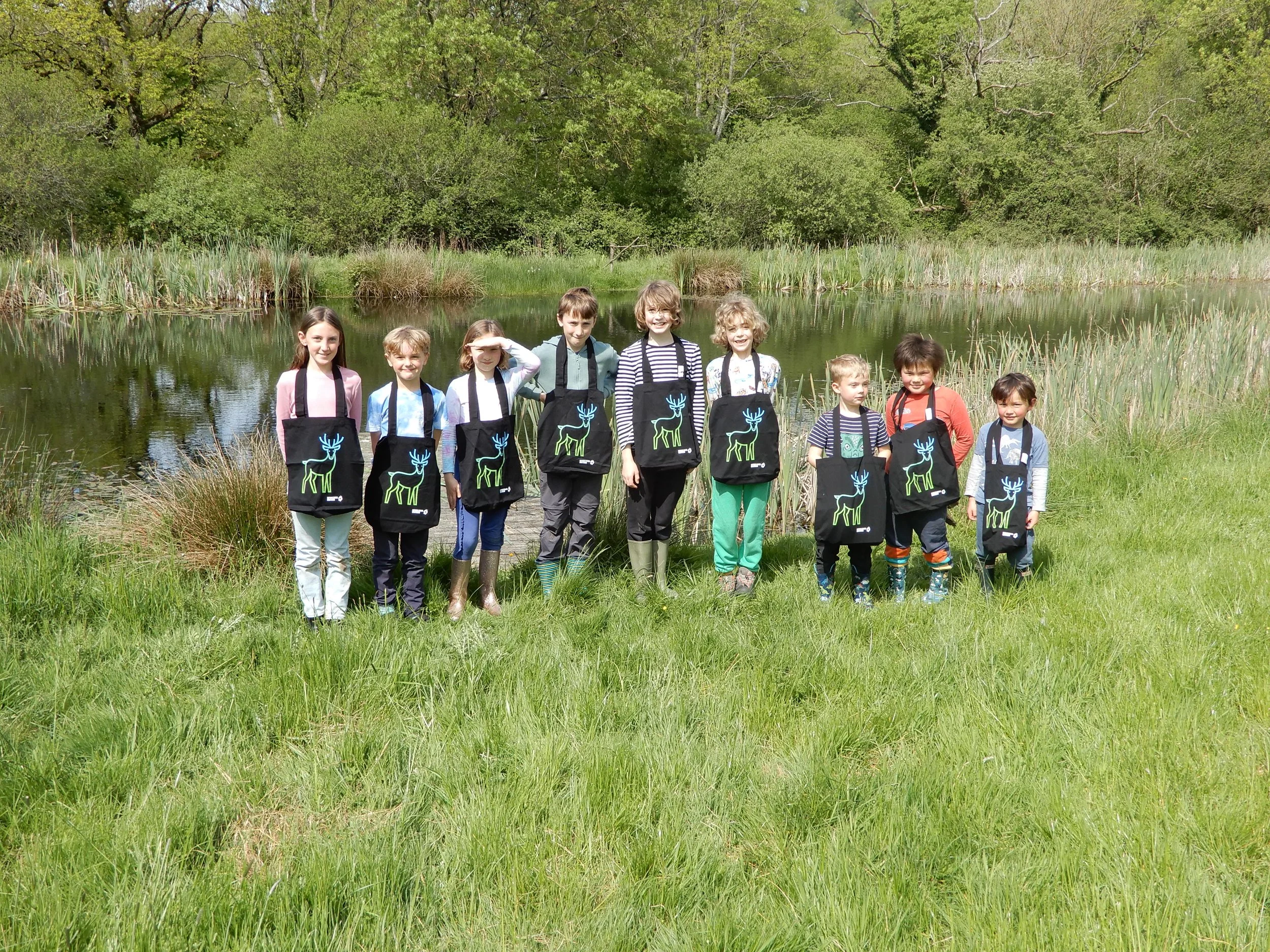Somehow it’s winter already, so a long overdue catch-up! Lets start with what happened last week and work backwards.
In Scotland…
Last week we were in the Cairngorms and I ran a very successful and fun rewilding workshop - for people rewilding at a smaller scale. It was very different from the workshops I run at Underhill Wood Nature Reserve (UWNR), with a focus on sharing and swapping things like what’s worked, what’s not worked and how to do more. It was held at Rewilding Lettoch and generously hosted by Steve Rawson and Kirsty Leishman - thank you so much! The workshop was instigated by the writer and naturalist Polly Pullar, and we were lucky to have the expertise of James Nairne from The Northwoods, a rewilding network affiliated with Scotland The Big Picture!
While we were there we walked in the Cairngorms - the highlights being Mar Lodge and especially Glenfeshie. In 2006, Anders Polvsen bought the 18,000 acre estate of Glenfeshie. At time of purchase the deer stocking rate was 65 per square kilometer - this now stands at 2 per square kilometer! And the results from this severe cull are astonishing. I have never been anywhere in the UK or Ireland with such a vibrant, rich and mesmerizing range of habitats. We have travelled to eastern Europe to find similar landscapes. A naturalist and bothy caretaker we met (Lindsey Bryce), who works on the estate, in response to my question, reckoned the Glen last looked like it does now in the early-1700’s. If anyone doubts the healing & regenerative power of rewidling go to Glenfeshie…it is extraordinary. There were missing elements - the presence of apex predators like Lynx and ecosystem engineers like Beaver. One day, just maybe!
I wonder how long it will take for Scotland’s uplands to be dominated by these biodiverse and bio-abundant habitats. How long will it take before the broken, outdated and environmentally destructive models of grouse shooting and deer stalking are surpassed by this type of land management.
I was told a story while we were there, about a wealthy stalker who was so hungover he had 3 attempts to fell a stag - he missed on each occasion. Disgusting, debasing, infantile.
At UWNR…
While we were hiking the Glens and hills of the Highlands, Gareth Harris and Lisa Wade (as ever, thank you!) did our annual Dormouse survey and the results are brilliant. 3 nests and this lovely male were found ! And just maybe the Dormice at UWNR are spreading - the finds occurred at 3 distant points across the land; one to the north-west, one to the south and one to the east. Why does this, finding unequivocal evidence of Dormice, matter? Dormice are classed as an indicator species - they indicate habitat health. So, where you find Dormice you are likely to find a range of flora and fauna. As the land rewilds and interventions like conservation hedge laying regenerate and restore the critical scrub mosaic, more and more species thrive. Its working….
Its worth adding that the PTES classify Dormice as vulnerable to extinction.
For years I have felt the presence of Otter at UWNR. I have seen disturbances on the lake with water churned and wake produced, but never found any concrete evidence - no scat or footprints. This summer that all changed, with this trail camera footage! This is so bloody exciting - a full blown, serious predator roaming the land. An interesting consequence of its presence is the sudden absence of waterbirds on the lake. The lake at UWNR was a preferred roost site for a range of waterbirds, and each evening, I would see and hear them landing as dusk drew in. And a few birds (Mallard, Moorhen, Little Grebe, Tufted Duck) would sometimes stay all day, foraging for food. It is likely that the Otter predated some of the birds and suddenly the lake become a place of danger, rather than sanctuary. A landscape of fear!
Writing of danger and fear - I am now seeing Goshawk with some regularity at UWNR. This summer I unfortunately disturbed him (or her) 1/2 way through their lunch, sorry.
Time elapsing has generated a change of young people who do the John Muir Conservation Award, at UWNR. After many years Nor, Annie, Poppy, Sophia and their friends have all ‘graduated’. So, we have a new group and we begin another cycle of teaching young people about nature and developing young naturalists. So far, we have studied diverse subjects like beavers, dormice, trees, solitary bees and spring!
Our John Muir Award summer campout at UWNR was a blast and the weather was superb!
And what else happened…some highlights:
In early summer two Hobbies (again) stopped by, refueled on dragonflies, displayed to each other (clearly a male – female pair) and headed on their way; in early spring the lake was flooded with Frogs and Toads; the Badger family were vaccinated for another year, so they are safe (I learnt from the ecologist who manages this process, that the UWNR family have no neighbours – they were all wrongfully slaughtered in the mass cull that swept through our part of England); the Barn Owls had another raucous brood who successfully fledged (somewhere between 20-30 owlets have fledged from UWNR over the past 9 years); the Grass Snakes emerged again in summer to confirm their ongoing presence at UWNR (I found a particularly large female this year!); the Roe Deer doe gave birth to another fawn (just a single this year) and for weeks I caught glimpses of this cute, spotted and gangly character and with the John Muir brigade we remodeled the leaky barriers – they are now bona fide beaver dam analogues (BDAs).






